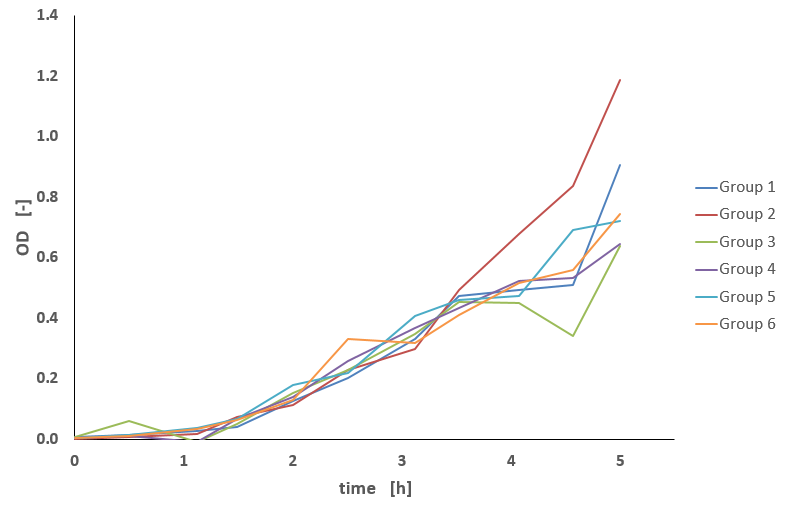Team:Aachen/Collaborations/Neanderlab
From 2014.igem.org
(→School Project at the Neanderlab) |
(→School Project at the Neanderlab) |
||
| Line 16: | Line 16: | ||
{{Team:Aachen/Figure|Aachen_14-09-24_Neanderlab_curves.png|title=Figure 1|subtitle=Growth profiles of E. coli measured by the students|width=400px}} | {{Team:Aachen/Figure|Aachen_14-09-24_Neanderlab_curves.png|title=Figure 1|subtitle=Growth profiles of E. coli measured by the students|width=400px}} | ||
| - | The reception was good, especially when considering that the class consisted of mostly students that chose biology because they are required to select one of either chemistry, physics or biology and thought that biology was the easiest one (haha!). | + | The reception of the program was good, especially when considering that the class consisted of mostly students that chose biology because they are required to select one of either chemistry, physics or biology and thought that biology was the easiest one and that there would be no math involved (haha!). At the end of the day the students were asked to fill out an evaluation sheet. The results of the evaluation were good, and are shown below. |
| + | |||
{{Team:Aachen/Footer}} | {{Team:Aachen/Footer}} | ||
Revision as of 11:02, 27 September 2014
|
 "
"
